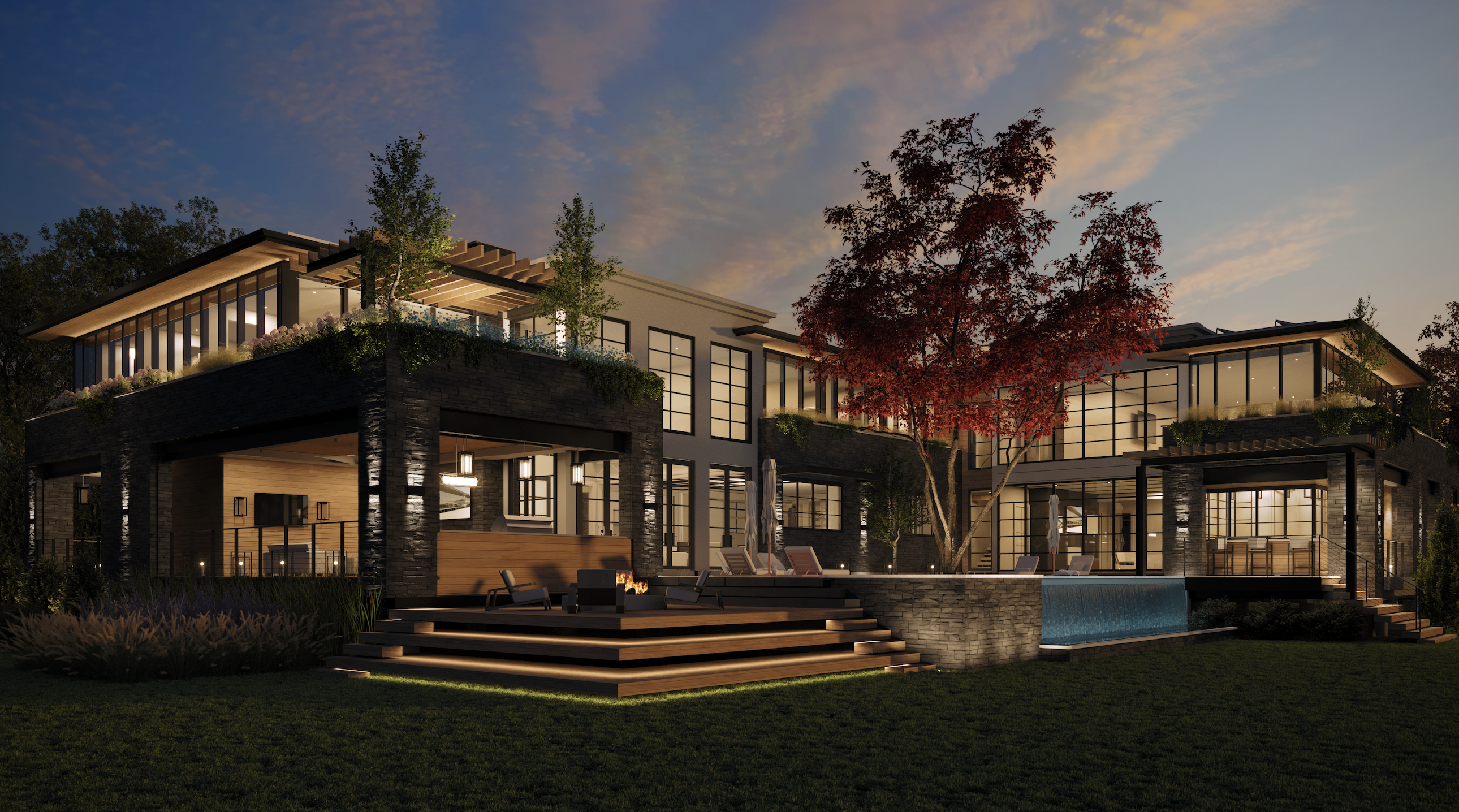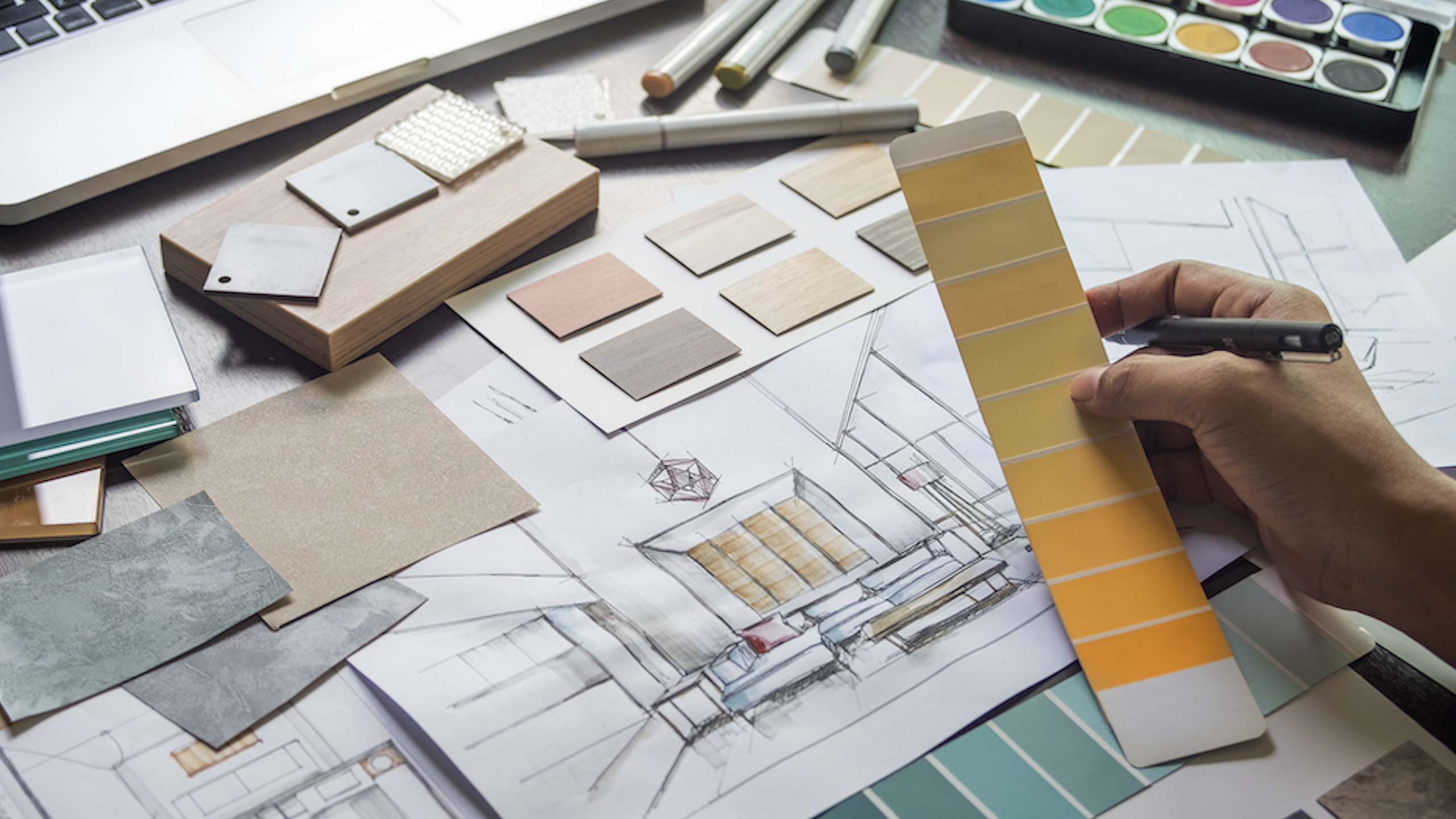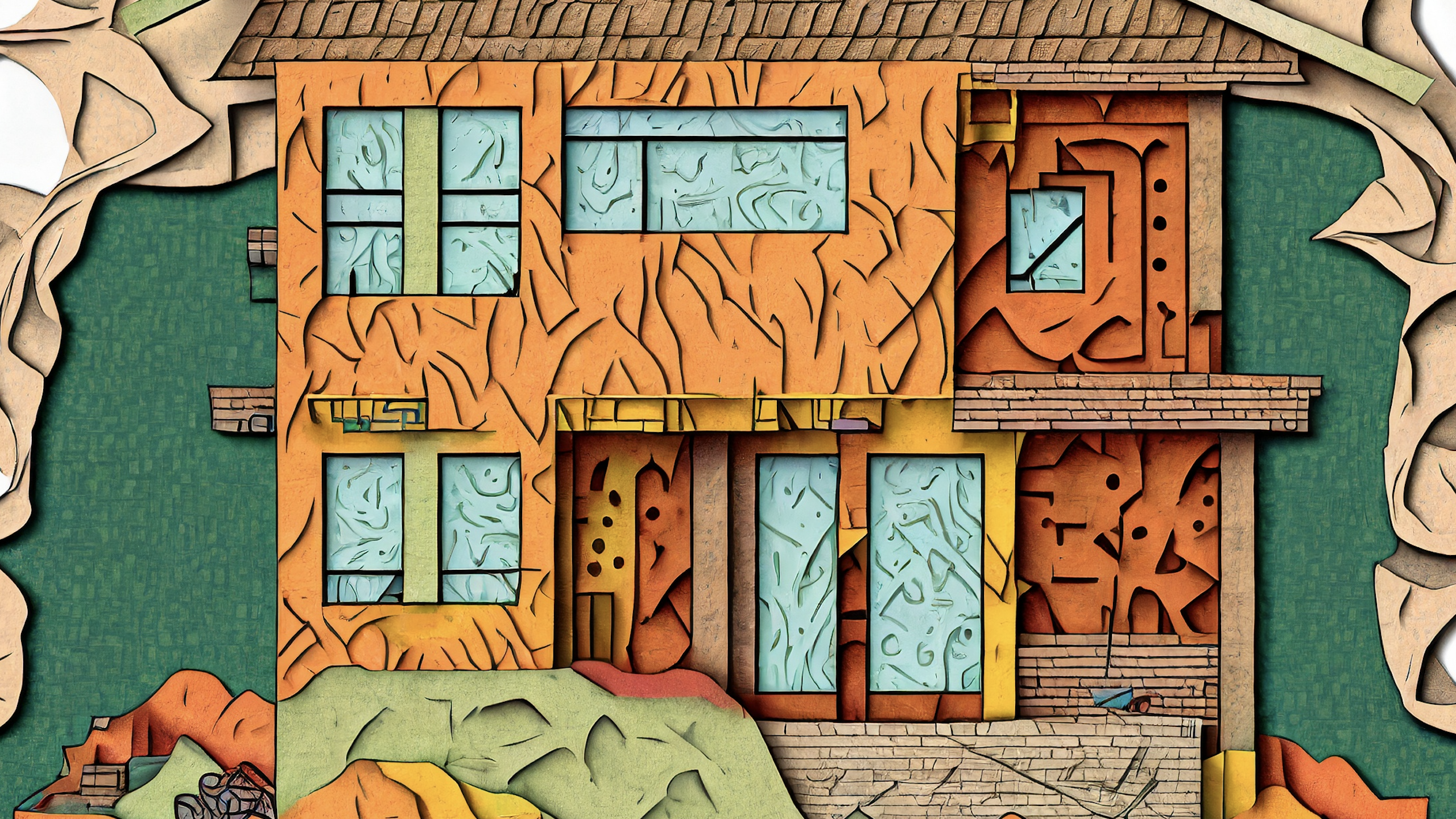|
Savvy builders and architects know the design and construction of a custom home is a complicated undertaking fraught with potential pitfalls along the way. Whether they're heading up a large- or a small-scale operation, those that make the most successful teams recognize that a cooperative effort, capitalizing on the unique skill set that each brings with them to the game, is essential.
"A good relationship between the builder and the architect can make the difference between a positive outcome with a happy homeowner at the end or a bad experience for everyone," says Stephen Giannetti, a Los Angles-based architect. Giannetti has worked alongside some of the area's top custom builders designing homes that range in style from traditional to ultra modern.
"
 |
|
Custom Builder John Finton (left) and architect William Hefner (right) have built luxury homes from some of Southern California's most discrimintating clients, including this project in Pacific Palisades. |
Still, says Finton, something as simple as a personality conflict can derail a custom project, which can take from one to three years from start to finish, very quickly. He compares the relationship between builder, architect and client to a marriage.
"Even though everyone is operating with the same goal in mind, matching personalities is critical to maintaining good relationships."
Another Los Angeles-based architect, William Hefner, who frequently works with Finton on high-end custom residential projects, says that individual temperament and business style are two of his primary considerations when he is asked to recommend a builder. "There are some clients that really need a lot of hand-holding and reporting to them. They want to see more backup and management. So you have to have a builder who works this way."
While both the architect and the builder are working together to transform a client's dream home into a reality, it is important to recognize that each has their own formal agreement with the client. "We have a fiduciary responsibility to our client to protect their interests apart from the contractor," says Chicago architect, Ray Hartshorne, whose commercial and residential design firm, Hartshorne + Plunkard Architecture, has designed numerous upscale primary and secondary homes in Illinois, Michigan and Wisconsin, in urban, suburban and rural settings. "At the same time I am aware of the fact that projects don't get done, or done well, without having a positive relationship with the contractor. I have found that when conflicts arise, it is in everyone's best interest to be willing to get together and work them out."
The "Custom" Customer"Some custom home clients have unrealistic expectations about how quickly things can be accomplished," says Hartshorne. "You have to demonstrate to them that designing a custom home is a long, labor-intensive process. It is not like working from a stock plan. The amount of time that the design will take can be hard to predict because of the variables.
People
 |
Finton agrees that custom clients can be demanding. "I recognize that my clients are generally the type that don't want to wait for things," he says. "It's similar to someone who goes into a dealership and wants to be able to drive right out with the Mercedes."
"I always insist on meeting the client before I will bid on a project," says custom builder William Binn, past president of the Wisconsin Builders Association whose Lake Geneva, Wis. firm, Wyntree Construction, builds a mix of luxury primary residences and vacation homes. "I want to get to know them and I also want to see that they are interested in getting to know me as well. This is just too personal of a business not to care who your builder is. I want to avoid clients who are not going to be fair with me, as the builder, in terms of what can be done within a certain budget."
Go With Who You KnowWhether it is the architect or the builder who comes on board a custom project first may depend on a client's previous relationship with one or the other or on a recommendation from a past client. In either event, when it comes to filling in that third member of the team, everyone agrees positive past relationships most often get the nod.
 |
Still, says Giannetti, it is always important that the client be the one to make the final decision on who to hire. "I am glad to provide my personal recommendation to my clients but I am careful to give them a choice whenever possible," says Giannetti.
"For the most part," says Hartshorne, "we work with contractors we have worked with in the past and have established a good relationship with. We maintain our own list of preferred contractors and they are the ones we recommend to our clients. By limiting working with unfamiliar builders," says Hartshorne, "we are able to minimize the risks that can lead to an unsuccessful project. Only in a small percentage of cases, about 10 to 15 percent, will we be working with someone we haven't worked with before," says Hartshorne.
In this case, he requests the builder provide a list of references from past clients. "We check them out thoroughly ourselves by talking to the client and finding out how their experience was. We ask things like, 'Were they satisfied? Would you use them again? Did you finish the project on good terms with each other?' If the client will allow it, we even go out and see the finished project so we can look at the quality of the workmanship ourselves."
Team SecretsAccording to Finton, cost, quality and scheduling are the three key elements of a project, which will effect nearly every decision made throughout the construction process. "Ideally, we are brought on during the pre-construction phase where, through careful planning and evaluation of the architectural design, we can address these issues in advance. The result is an efficiently run project with minimal changes." During the pre-construction phase he will thoroughly evaluate the architectural design and final working drawings for completeness and coordinate the design in relation to structural, mechanical, plumbing and electrical plans using a value engineering approach.
"The more questions asked, the better," says Hefner, "because it involves us early on in the dilemma when we have a better opportunity to make the necessary changes with minimal impact on the project as a whole."
"Neither party needs to be a hard-driving, 'my opinion is final' kind of person," says Binn, of the builder-architect relationship. "I have found it is much more beneficial to remain flexible and consider each other's opinions. An experienced builder can really be an important part of the design process, particularly when an architect is willing to say 'This is my concept, do you see any problems with it or have any suggestions?' The architect creates the emotional elements of the home and the builder then makes these a reality in consideration of the costs."
Binn uses an example of a residential "barn" project he and Hartshorne worked on in Southern Wisconsin to demonstrate this give-and-take attitude. "In this case, the architect came to me and said, 'I've never designed a barn before. Do you have any ideas?' I found a really wonderful example of a historic barn that was being torn down and we visited the site and took pictures of the interesting historical details such as the roof overhangs. Some of these details were then incorporated into the new home's design."
"While it may sound really simplistic," says Hartshorne, "the foundation of a solid team is really all about being able to communicate well with each other. It is also important for both parties to develop absolutely clear documentation concerning every phase of the project so that when changes are necessary they can be managed quickly. This permits cost increases to be pinpointed immediately and explained to the client."
"When a plan is put down well on paper, and the architect creates clear schedules, these establish a baseline for me to make my estimates," says Binn. "The better job that is done at this stage, the easier my job is later on.
"When changes occur and the client wants to know why the costs have gone up, this documentation provides a clear path to demonstrate exactly what it was that resulted in the increase. Something as simple as a change in window manufacturer may cause a huge jump in costs. This type of accountability ensures I will be able to maintain my client's trust and, for a custom builder, a good reputation is essential."
Avoid Fouls"Every custom project turns out all right in the end," says Giannetti, "but sometimes the parts in the middle get a little exciting. It is extremely important, right from the start, to put together an accurate budget. You really don't want to get into a situation where you have to tell a client that the $2 million house you designed for them is now going to cost $4 million."
"Extra costs can really throw a wrench into the whole team chemistry," says Hartshorne. "Clients are intensely aware of their bottom line and will want a clear explanation for any fluctuation. That is why it is extremely important to have a contractor on board that understands the costs well and is upfront with the client from the beginning."
"Costs that creep up late in a project are definitely something that make people unravel," agrees Hefner. "Sometimes this is caused by holes in the bidding process where the contractor forgot to include something that will impact the budget down the road."
Miscues can result in a big jump in costs, schedule changes, and even a delay in the project. But sometimes it's the longstanding relationship the builder and architect have established with each other that can actually head off potential problems before they occur.
Hefner describes a project he was working on with Finton in which there was a question about the quality of a specific tile that had been custom ordered from Nicaragua for the job. "Everyone became very concerned that, once delivered, it would not be up to the standards which had been set for this home. We were really worried about the look of it," he says. In the end, the pair made a weekend trip to the factory in Central America to check it out for themselves. "We had to travel through the jungle to get there but it was very fortunate that we made the effort because we ended up rejecting the order. Had we waited for the tile to be delivered, we would have been six weeks behind schedule waiting for its replacement to arrive."
Project delays can also occur when a client has second thoughts once construction has begun on their home. "In a perfect world it would not happen but having a client change his or her mind about something is a fairly common occurrence," says Hefner. "While you learn to expect this, even simple changes can require a new investment of effort on the part of many individuals including revising drawings, re-working schedules and updating the budget."
Hartshorne minimizes late-in-the-game changes by spending more time with the client during the design stage. "We work with them to finish the drawings to the point of selecting all of the details, right down to the color of the paint, before a project is sent out for a final bid. While it may extend the length of the design stage, it can save a lot of time later on. I also make it clear to the client it is important to have discipline in sticking with their ideas."
Giannetti agrees. "When a project is half done and a client decides to start changing or adding things they make it much more difficult to keep costs under control."
"There was a project that John and I were working on in which the client decided that he wanted to enlarge the house by another 10 feet after the footings had been poured," says Giannetti. "Because the builder and I had a strong working relationship in place, we were able to overcome this. We have learned to take turns helping each other out, to say to each other 'Ok, let's just fix this for them. It is worth it to us to maintain a good relationship between all parties.'"
"Finger pointing between the architect and the builder should be avoided at all costs," warns Hefner. "This is never a good thing. It just leads to confusion, a difficult project, and an unsatisfied client. When builders and architects begin to blame each other, the client can find it very discouraging because then they become the referee between the parties."
"After all, everybody is there to make the client happy," says Giannetti.
|
Related Stories
Custom Builder
HUD Secretary Marcia Fudge Announces Forthcoming Resignation
U.S. Department of Housing and Urban Development Secretary Marcia Fudge has said that she intends to leave office later this month
Custom Builder
Floodproof on a Floodplain
An impressive addition to the IDEA Home series, the NEWLOOK Experience Home is a master class in engineering and creative design, with builder Michael Freiburger out-thinking an exceptionally tricky lot
Custom Builder
Why Start a Custom Building Business?
In this Taking Care of Business segment, expert coach and trainer Scott Beebe joins our host Duane Johns to talk about where custom builders could be getting off on the wrong foot
Custom Builder
3 Questions Answered About Reliable Energy in Home Construction
Energy expert Bryan Cordill makes a case for why and how propane is an answer to growing concerns about reliability and resilience in home construction
Business
Custom Builder to Talk Color Design with Becki Owens at IBS
At this year's IBS, renowned designer Becki Owens will sit down with host James McClister, editor of Custom Builder, to discuss a variety of topics from basic color play in design to the Allura Spectrum palette, a collection of Sherwin-Williams colors curated for the benefit of pros
Business
PERC Highlights Sustainability and Efficiency at IBS with 'Clean Build Conversations'
Hear from industry standouts Matt Blashaw and Anthony Carrino at this hour-long Show Village event
Business
The Five Foundational Cornerstones
Business coach Scott Beebe shares insights into the often ignored business basics that could be the difference between long-term success and failure
Custom Builder
Start With the Why: Fundamentals of the Custom Builder Business
In our inaugural episode of Taking Care of Business, host and custom builder Duane Johns sits down with Scott Beebe, head coach and founder of My Business on Purpose, to talk vision, purpose, mission, values, and more
Business
Why AI Is Now Key to Our Trade Partner Strategy
Thompson Custom Homes Business Manager Erin Day explains how AI became a crucial part of building and maintaining successful trade partner relationships
Business
Thriving in 2024: Tips for Succeeding in an Uncertain Environment
Author and sales expert Mark Richardson shares his insights on the industry and how to rethink your approach to success in the new year












